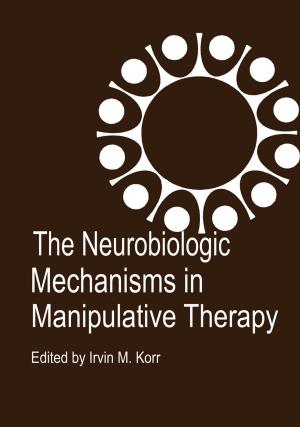Transgenic Models in Endocrinology
Nonfiction, Health & Well Being, Medical, Specialties, Internal Medicine, Endocrinology & Metabolism, General| Author: | Maria G. Castro | ISBN: | 9781461516330 |
| Publisher: | Springer US | Publication: | December 6, 2012 |
| Imprint: | Springer | Language: | English |
| Author: | Maria G. Castro |
| ISBN: | 9781461516330 |
| Publisher: | Springer US |
| Publication: | December 6, 2012 |
| Imprint: | Springer |
| Language: | English |
The dramatic recent expansion in genomic information has motivated the development of new approaches to characterize gene expression and function. A critical issue for both basic and clinical endocrinologists is the physiological role of genes involved in regulating endocrine functions. Transgenic technologies allow the translation of genotypic information into specific phenotypes by using gene overexpression or loss of specific gene functions. Murine functional genomics is thus of central importance in modem biomedical endocrine research. Although mice are at present, the preferred mammalian species for genetic manipulations because of the availability of pluripotent embryonic. stem cells and inbred strains and the relatively low breeding and maintenance costs, transgenic rats have also been generated and used to study endocrine physiology. The two basic techniques used in the creation of transgenic animal models are integration of foreign DNA into a fertilized oocyte by random chromosomal insertion and homologous recombination in embryonic stem cells that are then introduced into zygotes. Transgenic mice and rats serve as sophisticted tools to probe protein function, as models of human disease, and as hosts for the testing of gene replacement and other therapies. Embryonic stem cell libraries for mouse gene deletion are being developed, which will make it possible to generate knockout mice rapidly and without the need to analyze gene structure, construct targeting vectors, and screen embryonic stem cell clones. A novel approach to transgenesis for the expression of DNA within adult differentiated neuroendocrine cells in vivo is using viral vectors.
The dramatic recent expansion in genomic information has motivated the development of new approaches to characterize gene expression and function. A critical issue for both basic and clinical endocrinologists is the physiological role of genes involved in regulating endocrine functions. Transgenic technologies allow the translation of genotypic information into specific phenotypes by using gene overexpression or loss of specific gene functions. Murine functional genomics is thus of central importance in modem biomedical endocrine research. Although mice are at present, the preferred mammalian species for genetic manipulations because of the availability of pluripotent embryonic. stem cells and inbred strains and the relatively low breeding and maintenance costs, transgenic rats have also been generated and used to study endocrine physiology. The two basic techniques used in the creation of transgenic animal models are integration of foreign DNA into a fertilized oocyte by random chromosomal insertion and homologous recombination in embryonic stem cells that are then introduced into zygotes. Transgenic mice and rats serve as sophisticted tools to probe protein function, as models of human disease, and as hosts for the testing of gene replacement and other therapies. Embryonic stem cell libraries for mouse gene deletion are being developed, which will make it possible to generate knockout mice rapidly and without the need to analyze gene structure, construct targeting vectors, and screen embryonic stem cell clones. A novel approach to transgenesis for the expression of DNA within adult differentiated neuroendocrine cells in vivo is using viral vectors.















